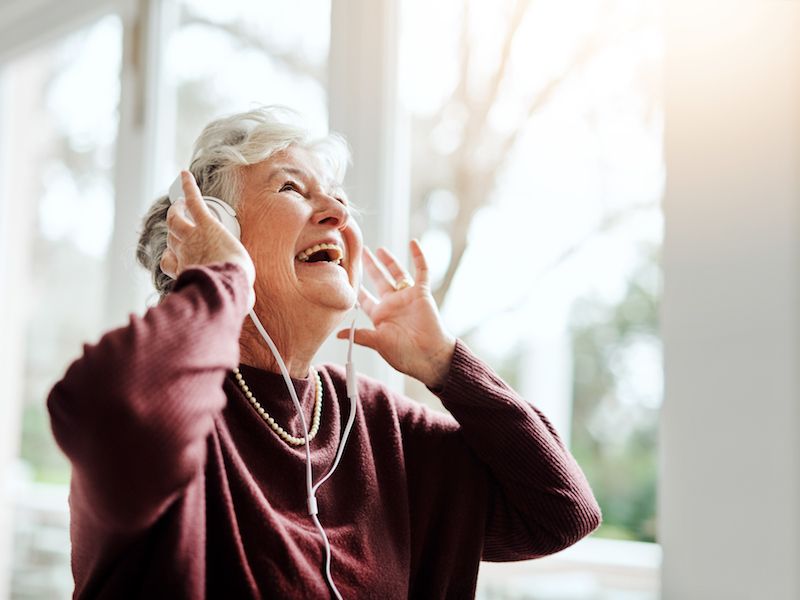
Individuals who work in loud surroundings such as construction sites or at heavy metal concerts are not the only ones impacted by noise related loss of hearing. It doesn’t even need to be work-related, recreation-related noise exposure can be damaging, also. What type of exposure are we talking about? Loud noise heard through headphones, whether it be gaming, streaming video, music, or even an audiobook with the volume cranked up.
You might be alarmed to find out that a mobile device can get that loud. But these devices can achieve continuous volumes of over 105 dB, which is around the ordinary human pain threshold. Your ears will actually start to hurt at this volume. So what can you do to protect against this kind of noise-related loss of hearing?
It’s important here to consider the volume. An easy shorthand that’s widely suggested is the 60/60 rule: Listen with the volume at no more than 60% for 60 minutes or less in a single session (because how long you listen for matters, too).
Make a Setting on Your Hearing Aids For Listening to Music
If you wear hearing aids, you’re most likely streaming your mobile device directly to your hearing aids, so be certain the volume is not too high or that you’re not attempting to drown out other sounds with your music. And there are more appropriate ways to listen to music so consult us about that as well. Hearing aids aren’t designed to make music clearer like they do with voices so if really like music, you may have observed this. We may be able to change the configuration to decrease feedback and noise while boosting some frequency to better the quality of sound when listening to music.
What Are The Best Headphones For You?
When picking out headphones there are numerous options, especially if you use hearing aids. It might be a matter of personal preference, but there are some things you will want to consider there too.
Headphones That go Over The Ears
While the foam-covered earpieces that was included with your old Walkman are basically a thing of the past, over-the-ear headphones have made a comeback. Often surprisingly pricey, they offer lots of color possibilities and celebrity endorsements, and yes, superior sound quality. And unlike those little foam pads, these go over the entire ear, stopping outside sounds.
Main-stream wisdom is that these are safer than in-ear headphones because the source of the sound is further away from your eardrum. But because the speakers are larger they are commonly capable of much louder volume. Also, noise-canceling might help you ignore the crying baby on your flight, but in other circumstances, it can block sounds you need to hear (like a honking car). But on the positive side, you won’t need to contend with outside noise so you can enjoy your music at lower volumes.
Earbuds
The standard earbuds are widely recognized for poor sound quality, though many people still use them because hey, they came with the phone. In addition, with newer models that lack a headphone jack, sticking with Apple’s earbuds can simply be easier.
Earbuds also don’t cancel out noise so the downside is, you have a tendency to crank up the sound level. It’s commonly believed that inserting earbuds so close to your eardrum is the main problem but it’s actually the volume.
Noise Canceling Earbuds
More comfortable than ordinary earbuds, models that have a round rubber tip are the choice of many because they help stop outside sound. The rubber molds to the shape of your ear, creating a seal that blocks other sounds from getting in. Not to sound like a broken record, but these have the same disadvantages as the other two (volume is the main problem), as well as carrying the same caution as over-the-ear headphones (they can block out warning sounds). Obviously, these won’t work for you if you wear hearing aids.
You may have to test out quite a few pairs before you find headphones that are what you are looking for. Depending on what you regularly use them for talking on the phone, say, versus listening to music, you’ll have different acoustic requirements. The significant thing is to seek out headphones that make it comfortable for you to enjoy at a safe sound level.
Don’t Cut Corners When Dealing With Your Hearing
How can you be sure it’s safe? If you own a smartphone, you can get an app for that, you can get the National Institute for Occupational Safety and Health’s free Sound Level Meter app. You can get other apps, but studies has found that the dependability of these other apps is hit-and-miss (in addition, for unknown reasons, Android-based apps have been shown to be less reliable). That motivated NIOSH to create their own app. The app allows you to measure external sounds, but you can also measure the sound coming from your device’s speakers, so you will learn exactly how much volume your ears are getting. You have to put in a little effort, but taking these kinds of preventative steps can help safeguard your hearing.
